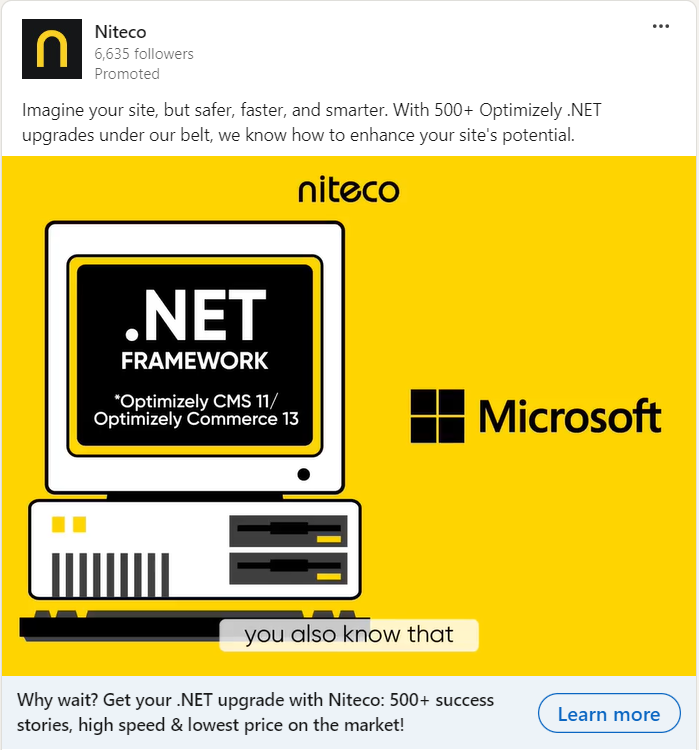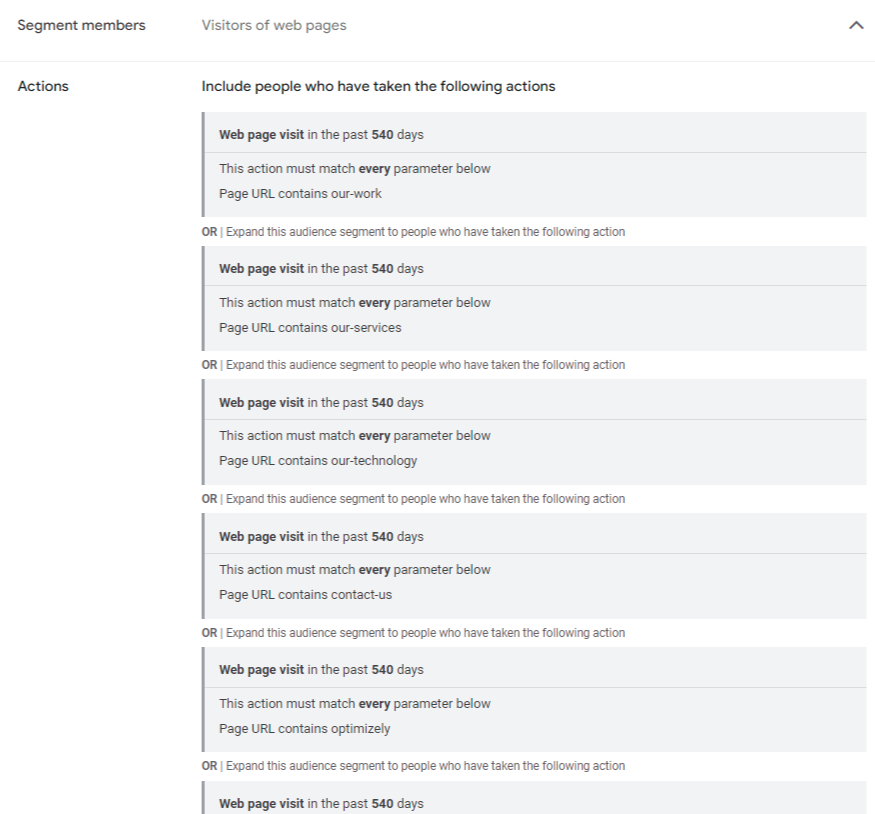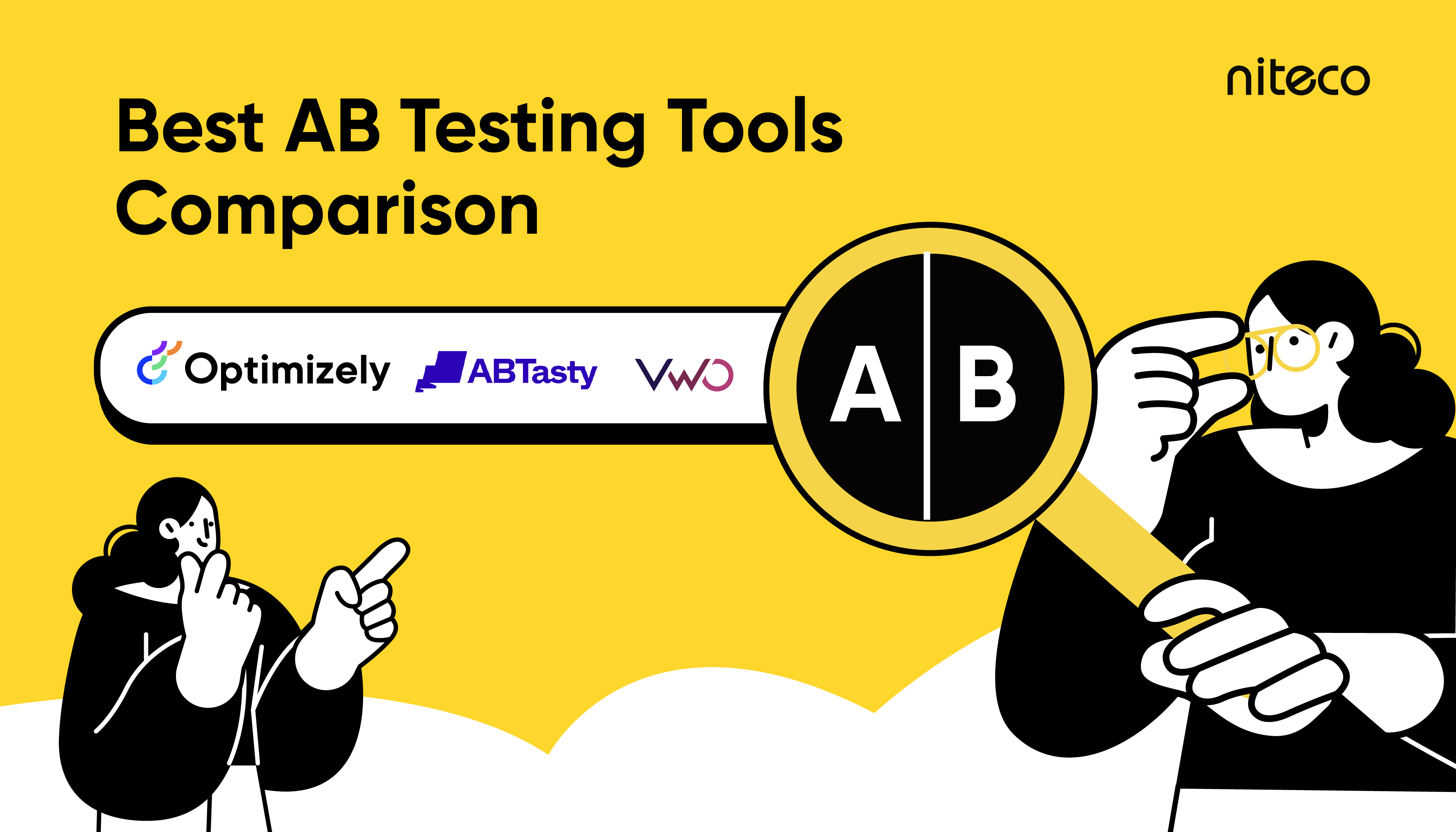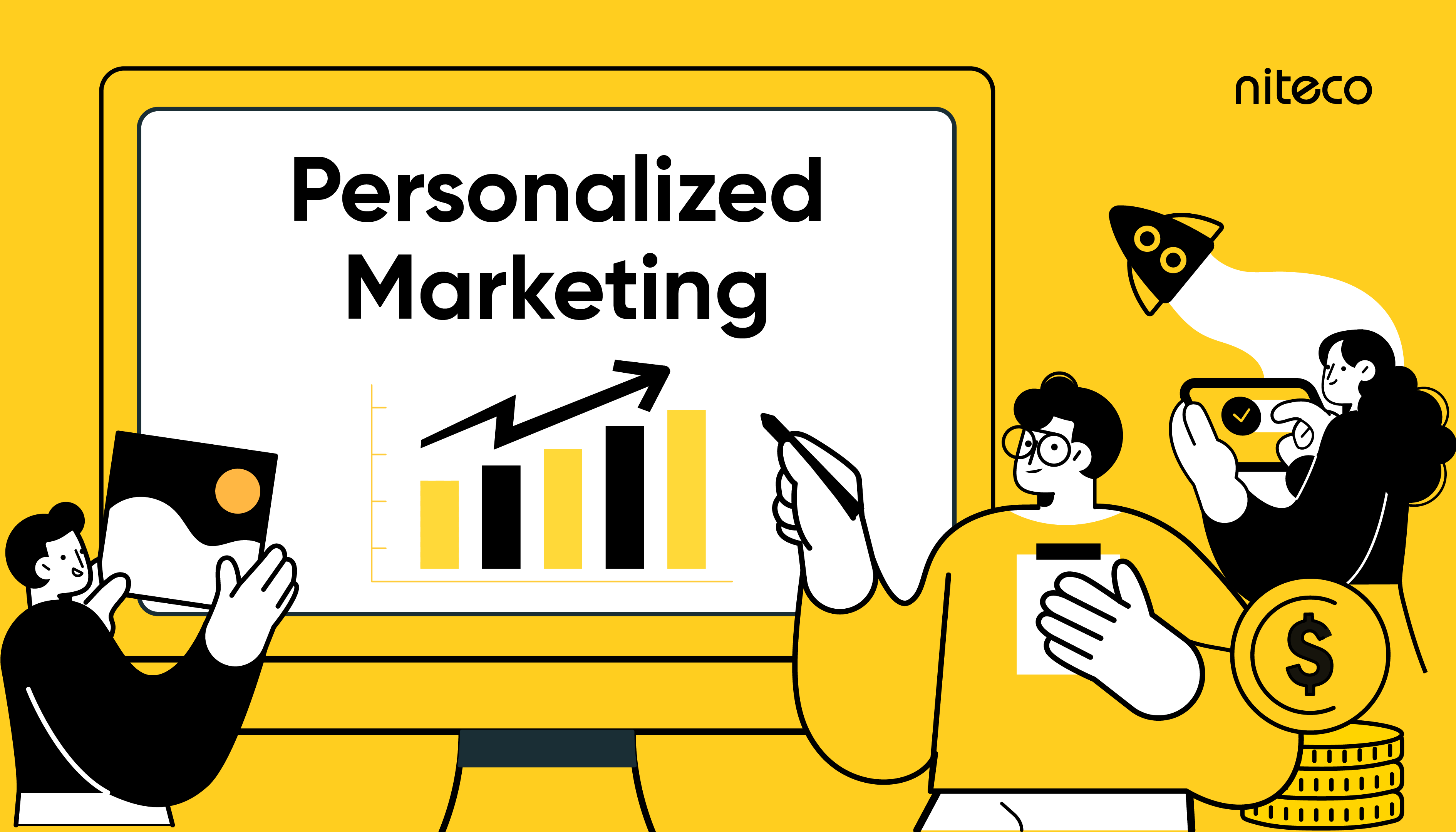You already know the essentials of Commerce marketing: Getting your brand in front of the right people, turning visitors into buyers, and building lasting customer loyalty. But here's the challenge - not all customers think or behave the same way. That’s why a blanket approach to marketing just doesn’t cut it anymore. This is where data-driven marketing comes into play. It is a marketing approach that leverages customer data to make smarter, more personalized decisions, boosting relevance and impact. By understanding trends and behavior through data, businesses can stay competitive, make informed choices, and connect more meaningfully with their audience.
With years of experience, Niteco has seen the power of data-driven strategy firsthand, and in this article, we’ll explore the benefits and core tactics of data-driven marketing—with our real-world examples to show how it all works.
What is data-driven marketing?
Data-driven marketing uses customer data to make informed decisions and optimize marketing strategies. Unlike traditional approaches, it relies on data collection, analysis, and behavior tracking to predict future actions and tailor marketing efforts. By understanding customer needs and preferences, businesses can deliver personalized experiences, enhance user satisfaction, and improve ROI.
Data-driven marketing leverages platforms like Google Analytics 4, heatmaps, etc to track user behavior and gather insights. These platforms provide marketers with detailed, real-time data that allows them to identify specific points in the customer journey that need improvement and craft strategies to empower businesses.
Benefits of data driven marketing for Commerce
In the fast-paced world of Commerce, data-driven marketing provides several key advantages that can significantly enhance business performance:
- Increased ROI: By using data to focus on high-impact marketing strategies, businesses can optimize their spending, ensuring every dollar is directed toward efforts that yield the greatest returns. As a part of Niteco’s scope with Electrolux, our data-driven CRO project has helped the brand get 11x ROI. You can read more about how we supported Electrolux to get significant results here.
- Improved conversion rates: With data-driven insights, you can precisely target audiences most likely to convert, leading to better customer acquisition and higher sales.
- Better decision-making: Real-time data allows Commerce businesses to make informed, evidence-based decisions, helping avoid costly marketing mistakes and improving overall campaign performance.
- Enhanced personalization: Personalization is more effective with data. By understanding customer behaviors and preferences, you can tailor offers and messages to resonate on a personal level, increasing engagement and loyalty.
- Deeper customer insights: Analyzing customer data reveals trends, buying behaviors, and preferences, helping businesses predict future demand and adapt their strategies accordingly.
- More precise targeting: Data allows you to segment your audience and focus marketing efforts on the most valuable customers, maximizing the efficiency of your campaigns.
Examples of data-driven marketing in Commerce
Data-driven marketing tactics have become essential in the highly competitive world of Commerce, enabling companies to leverage insights to drive performance. Below are some real-world data-driven marketing examples from Niteco.
1. Personalized email marketing
One of the most common tactics of data-driven marketing is personalized email marketing. This strategy focuses on analyzing various customers data points, such as customer behavior, preferences, browsing history, and purchase patterns, businesses can create emails that resonate with individual recipients.
For instance, Electrolux Australia, in collaboration with Niteco, successfully executed a data-driven email campaign aimed at welcoming customers and providing essential information about their appliances. The campaign specifically targeted customers who had registered their products on Electrolux.com.au.
By leveraging the insights gleaned from customer data, the emails were meticulously tailored. Each newsletter featured a customized header banner aligned with the customer’s specific product category, creating a visually appealing and relevant introduction. Additionally, the content included personalized details such as the registered appliance name, links to the user manual, and suggestions for related services and accessories tailored to each product.

A part of the personalized email Electrolux sent to their customers. SEE FULL IMAGE
2. Targeted advertising
Targeted advertising is a powerful data-driven marketing tactic that enables Commerce businesses to reach specific audience segments with highly relevant messages. By analyzing customer data and behavior, brands can identify potential customers who are most likely to engage with their products or services. This approach not only increases the efficiency of ad spend but also enhances the likelihood of conversion by ensuring that advertisements resonate with the right audience at the right time.
An example of this strategy is our targeted advertising campaign, focusing on businesses still using outdated versions of the .NET framework. Recognizing the urgency for these companies to upgrade to the latest Optimizely .NET, Niteco crafted ads that specifically addressed their needs. By leveraging data analytics to understand the target audience's pain points, we ensured that either social media feeds or Google pages of these businesses were saturated with relevant promotions at critical moments.

3. Dynamic content recommendations
Dynamic product recommendations leverage customer data to suggest items or content based on past interactions with a website or app. This tactic is widely used by industry giants like Amazon and Netflix, where complex algorithms analyze user behavior to predict preferences and deliver personalized suggestions. By harnessing real-time data, brands can offer tailored product recommendations that not only enhance the user experience but also drive sales.
A notable example of this is Niteco’s partnership with Steadfast, where we implemented Optimizely Product Recommendations - a powerful tool for dynamic content suggestions based on customer data. By utilizing this technology, Steadfast achieved an impressive 289% increase in clicks on content sections like “Related Articles”. This surge in engagement was made possible by delivering relevant content tailored to the interests of users based on their previous interactions with the site.

4. Behavioral retargeting
Another impactful data-driven marketing tactic is behavioral retargeting. This approach allows Commerce businesses to reconnect with users who previously visited their site but left without making a purchase. By analyzing browsing behavior, brands can serve personalized retargeting ads that remind users of the specific products they viewed, encouraging them to return and complete the purchase. This strategy not only recaptures lost sales opportunities but also significantly boosts conversion rates. In fact, in 2024, 77% of businesses are actively using retargeting to generate leads, and many report a 150% increase in conversions after integrating retargeting into their primary advertising strategies, underscoring its ongoing effectiveness.
Niteco has successfully implemented behavioral retargeting campaigns across platforms like Google, YouTube, and LinkedIn, particularly during the Sitecore-to-Optimizely migration campaign. Leveraging data from users who are fed up with Sitecore’s hiccups, Niteco crafted ads with the message “Optimizely outperforms Sitecore in various ways” targeting those already searching for an alternative. The campaign was designed around user behavior to ensure the ads were shown at the right time to those most in need of a new solution.

An example of setting up retargeting ads.
5. Customer segmentation
Customer segmentation involves dividing a target audience into distinct groups based on shared characteristics, such as demographics, purchase history, or engagement patterns. This tactic allows brands to tailor their marketing efforts to each specific group, resulting in more personalized and relevant messaging that leads to higher engagement and conversion rates.
Customers appreciate feeling special, and segmentation enables brands to cater to individual preferences. At Niteco, customer segmentation is foundational in every project. In our CRO project with a leading lingerie retailer in Canada, we utilized segmentation before conducting A/B tests to identify which elements would enhance Add-to-Cart rate. We segmented customers by device—desktop and mobile. This approach gave us a clear understanding of user behavior across different platforms, allowing us to generate actionable insights and drive significant improvements for the brand.
Data-driven marketing best practices for Commerce
To maximize the benefits of data-driven marketing, brands need to adopt best practices that ensure accuracy, relevance, and continuous improvement. Below are key strategies that businesses can follow.
1. Setting measurable goals
The foundation of any successful data-driven marketing campaign is having clear, measurable goals. Whether it’s to increase conversion rates, reduce cart abandonment, or improve customer retention, setting specific goals helps direct your data collection and analysis efforts.
2. Developing a data-driven marketing strategy
A well-thought-out strategy is essential for leveraging customer data effectively. This involves determining which data sources to collect from, how to integrate them, and which tools will be used to analyze the data. Commerce brands need to outline the entire customer journey and identify key touchpoints where data-driven interventions can have the greatest impact.
3. Ensuring data quality and accuracy
For an effective data-driven marketing, the data being used must be accurate and reliable. Poor data quality can lead to incorrect conclusions and wasted resources. Commerce businesses need to continuously clean and update their data to ensure that they are working with the most current and correct information.
4. Segmentation and personalization
As mentioned in the examples, segmentation and personalization are powerful tactics driven by data. By dividing your audience into smaller segments based on behavior or preferences, you can create personalized marketing messages that resonate more effectively.
5. A/B testing for campaigns
A/B testing is a critical practice in data-driven marketing that allows brands to test different variations of a campaign to determine which performs better. This iterative approach enables continuous optimization based on data.
>>> Read more: Top 5 A/B testing tools to optimize your website conversions in 2024
6. Creating automated workflows
Automated workflows powered by data can streamline marketing efforts, such as sending abandoned cart emails or post-purchase follow-ups. By using customer behavior data, businesses can set up automated triggers that respond to specific actions in real-time. This not only saves time but also ensures that customers receive relevant messages at the right moment.
Common mistakes to avoid in data-driven marketing
While data-driven marketing offers immense potential, there are common pitfalls that Commerce businesses must avoid ensuring success.
1. Over-reliance on one type of data
Relying too heavily on a single source of data, such as website traffic or social media analytics, can give an incomplete picture of customer behavior. To avoid this, businesses should diversify their data sources, integrating both quantitative and qualitative data to get a holistic view of their audience.
2. Not setting clear KPIs
Without clear KPIs, it becomes difficult to measure the success of a marketing campaign. Setting specific KPIs related to conversion rates, customer acquisition costs, or return on ad spend (ROAS) ensures that businesses can track performance accurately.
3. Failing to clean and organize data
Unclean or disorganized data leads to poor decision-making. Commerce companies need to invest in data management practices, ensuring that their data is accurate, up-to-date, and easily accessible.
4. Ignoring qualitative feedback
While quantitative data is valuable, qualitative feedback from customers—such as reviews, surveys, or social media comments—should not be overlooked. Combining both types of data provides a more comprehensive understanding of customer preferences and pain points.
Verdict
Data-driven marketing has become an essential tool for Commerce brands to succeed in a competitive landscape. By leveraging customer data to inform personalized campaigns, optimize decision-making, and improve customer experiences, businesses can drive significant improvements in conversion rates, ROI, and customer satisfaction. As data analytics and marketing automation continue to evolve, companies that embrace these strategies will stay ahead of the curve.
To further explore how data-driven marketing can transform your Commerce business, contact Niteco for expert guidance.
to transform your business and drive results?



